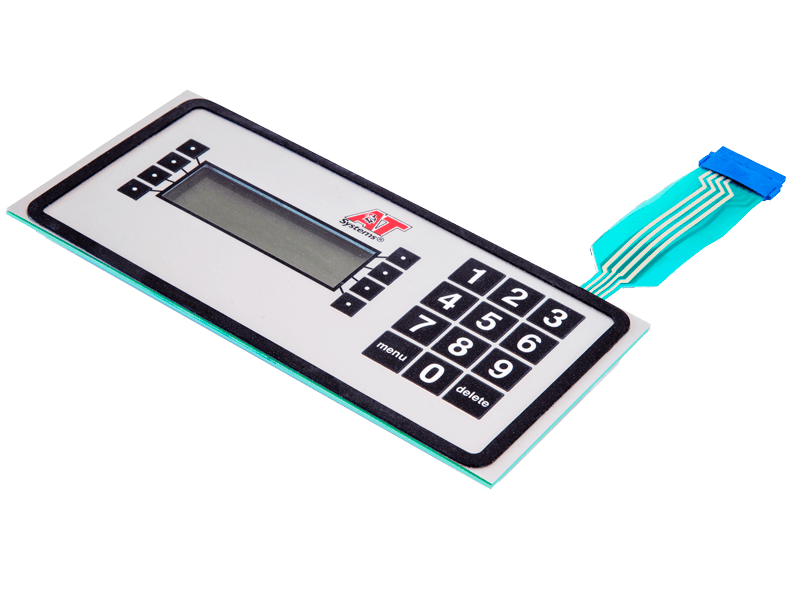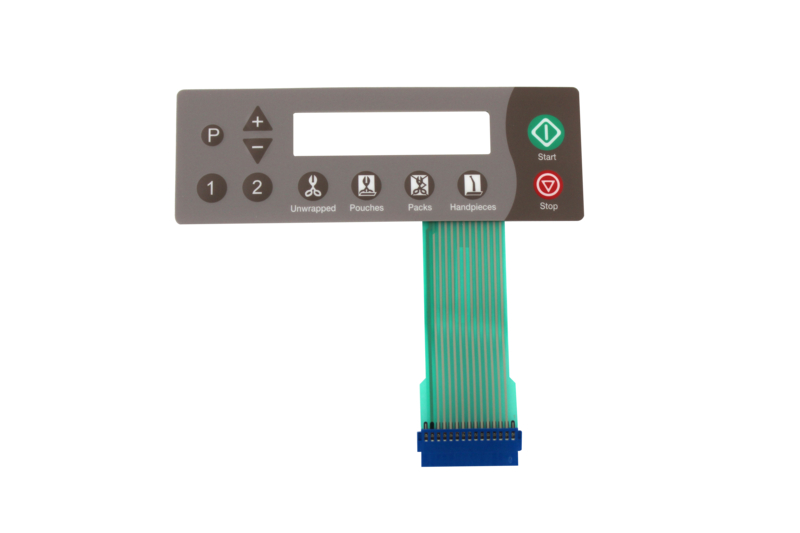Choosing a nearby membrane switch manufacturer can lower lead times and shipping costs.
Wiki Article
Everything About Membrane Switch: Recognizing Its Style and Capability
When you believe concerning the control user interfaces in contemporary tools, membrane buttons commonly come to mind. Let's discover what collections membrane layer switches apart from various other control systems.What Are Membrane Buttons?

Their smooth nature makes them easy to clean and immune to dirt and moisture, an essential feature in several environments. Membrane buttons can additionally be customized concerning shape, dimension, and graphics, permitting producers to produce distinct user interfaces customized to details products. Plus, they're light-weight and slim, which assists in minimizing the total bulk of gadgets. In general, membrane switches play a considerable role in boosting customer experience across a vast range of applications.
Exactly How Membrane Switches Job
When you push a secret on a membrane button, it triggers an uncomplicated yet efficient mechanism. The top layer, typically made of versatile product, presses down onto a conductive layer beneath it. This activity bridges the space between conductive traces, finishing an electric circuit. As soon as the circuit closes, it sends out a signal to the device's controller, which translates your input.You'll observe that the responsive feedback differs based upon the button layout, using either a soft click or an extra obvious action. When you launch the trick, the membrane layer go back to its original placement, resuming the circuit and stopping the signal. This procedure takes place almost instantly, making sure a responsive customer experience.
Membrane switches are prominent because of their sturdiness and resistance to dust and moisture, making them excellent for different applications, from household devices to medical tools. Comprehending this operation aids you appreciate their prevalent usage.
Key Components of Membrane Layer Buttons
Comprehending the vital elements of membrane buttons is fundamental for realizing their functionality and layout. At the core, you'll find the visuals overlay, which supplies the visual user interface for individuals. Below that, there's a spacer layer that separates the circuit layers, ensuring that they do not make get in touch with till pressed. The circuit layer is where the magic happens; it includes conductive traces that complete the circuit when you press the button. Another crucial element is the sticky backing, enabling the switch to abide by surface areas firmly. Ultimately, the protective layer shields against environmental aspects and use, expanding the button's life expectancy. Each part plays a substantial role in making certain trusted efficiency and user communication. By recognizing these elements, you'll gain insight right into just how membrane layer switches run and their relevance in numerous applications.Products Used in Membrane Switch Over Design
The performance and toughness of membrane layer switches over heavily rely on the products used in their layout. You typically come across polyester and polycarbonate as primary substrates as a result of their exceptional stamina and adaptability. These materials stand up to scrapes and chemicals, making them optimal for requiring environments.The conductive layers often use silver or carbon, picked for their dependability and conductivity. membrane switch manufacturer. Silver supplies premium efficiency, while carbon is a cost-effective alternative. For the overlay, you may take into consideration a matte or shiny finish, depending on your visual requirements and customer experience
Make particular to pick adhesives that hold up against ecological variables like temperature level and moisture. Selecting the best materials will guarantee your membrane layer button stands the examination of time.
Style Considerations for Membrane Switches
While developing membrane layer switches, it's essential to take into account various aspects that influence their capability and user experience. Beginning by focusing on the format and button size; make certain they're moved here intuitive and simple to navigate.Validate your design accommodates environmental factors, like wetness or temperature level variants, which could impact performance. By very carefully considering these elements, you'll develop a membrane button that improves usability and complete satisfaction.
Applications of Membrane Layer Buttons
Membrane switches are versatile elements found in various applications, from commercial equipment to customer electronics. You'll see their impact in devices that need sturdy interfaces and in gadgets that benefit from streamlined layouts. Comprehending these applications assists you appreciate the capability and functionality of membrane buttons in day-to-day innovation.Industrial Equipment Usage
When you're looking to enhance the functionality of industrial tools, membrane layer switches provide a reputable solution that incorporates durability with easy to use style. These switches are ideal for severe settings, giving resistance to dust, moisture, and chemicals. Accept membrane buttons to simplify your operations and improve overall performance.Consumer Electronics Combination
In the domain name of customer electronics, membrane layer switches play a vital role in boosting individual interaction and tool performance. Membrane layer buttons likewise ensure resilience and resistance to dirt and wetness, extending the life-span of your electronics. By choosing membrane buttons, you improve not simply the performance but likewise the style of your gadgets, making everyday communications smooth and pleasurable.Benefits and Drawbacks of Membrane Layer Switches
While membrane switches provide a variety of advantages, they likewise include some downsides that you must think about. One substantial benefit is their portable design, making them ideal for space-constrained applications. They're also cost-efficient, providing a long lasting solution with a reduced manufacturing cost. On top of that, their seamless surface is very easy to tidy, enhancing health in settings like healthcare facilities.
Membrane buttons can have a shorter lifespan contrasted to mechanical switches, especially under hefty use. They can also be much less responsive, which may impact user feedback throughout operation. Stabilizing these pros and page disadvantages will aid you identify if membrane layer switches are the right fit for your task.
Frequently Asked Inquiries
The Length Of Time Do Membrane Switches Commonly Last?
Membrane switches typically last in between 5 to 10 years, relying on usage and environmental problems. You'll intend to imp source review elements like wear, direct exposure to moisture, and temperature level fluctuations to assess their longevity successfully.Can Membrane Layer Switches Over Be Personalized for Details Designs?
Yes, you can personalize membrane layer switches to fit certain layouts (membrane switch manufacturer). You'll have the flexibility to pick shades, shapes, and layouts that match your project's demands, guaranteeing they blend seamlessly with your general aestheticWhat Is the Expense Array for Membrane Change Manufacturing?
The price range for membrane button manufacturing commonly falls between $1 and $10 each, relying on factors like style intricacy, amount, and products. You can obtain quotes from manufacturers to discover the finest alternative.
Are Membrane Layer Switches Over Waterproof or Immune?
Membrane layer buttons can be designed to be water resistant or resistant, depending upon products utilized and building and construction methods. If you need them for wet environments, guarantee you specify those demands throughout the style procedure.Just How Do Membrane Layer Switches Over Contrast to Typical Buttons?
Membrane layer buttons are normally thinner and a lot more flexible than traditional switches, offering a streamlined layout. They're often easier to clean and incorporate, yet may not supply the responsive comments you're utilized to with mechanical options.Conclusion

Report this wiki page